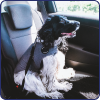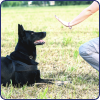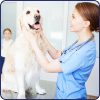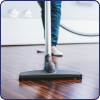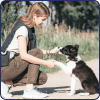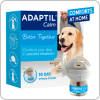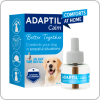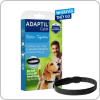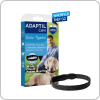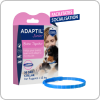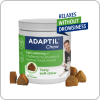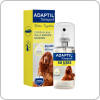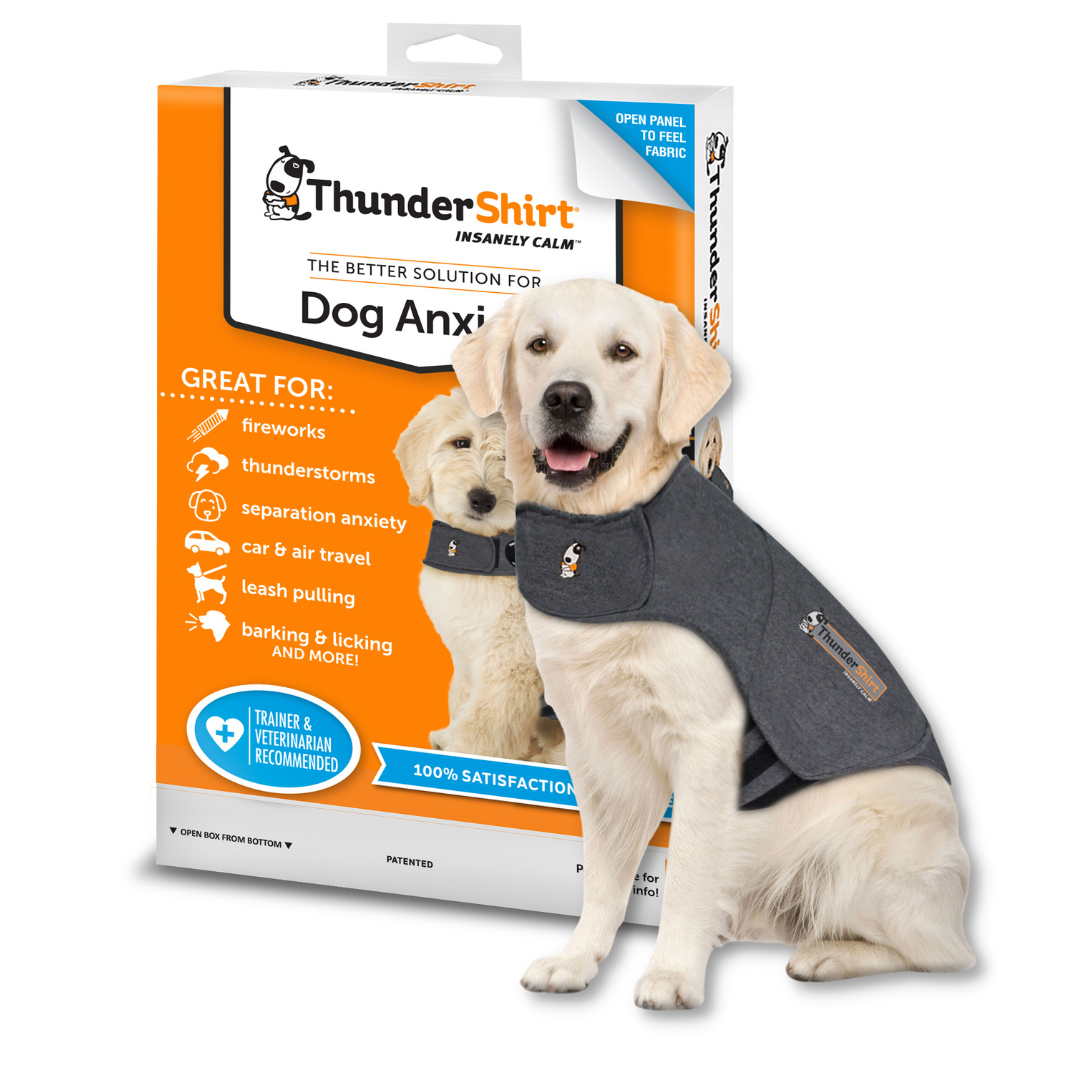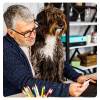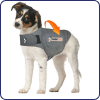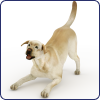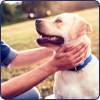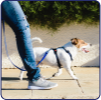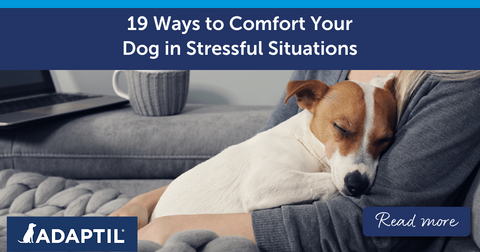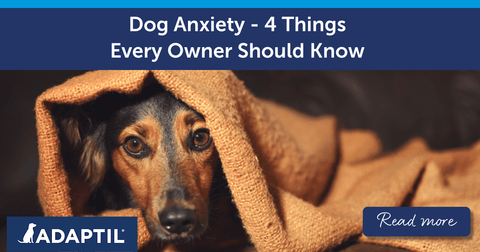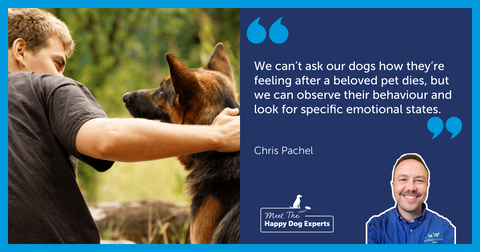Want to subscribe to our blog?

Happy Dog Expert: New Puppy Training Tips
Written by Chloe Fesch, published on April 18, 2023
Welcoming a new puppy is an exciting time - and means that you'll need to start training them regularly to ensure that you help your dog develop and adapt to new experiences. Here are 3 essential tips to get started with your puppy. These tips are designed to help you better understand your puppy and how they learn - so that you can be as consistent with training as possible.
Tip # 1: Teach your pup to learn self-control
When your puppy was still with their mother and siblings, they learnt how to manage their emotional states, especially in times of excitement. So it's your role to help your puppy to continue to learn how to manage frustration. Here's how:
- Take the lead in all activities. When your puppy asks for your attention, but it's not playtime you need to show that you can't always interact with them immediately. To communicate this, you should simply ignore them. Don't look at your puppy, do not speak to or touch them. Simply turn your back to them. Wait until your puppy has moved on and then invite them to interact with you on your terms.
- If your puppy nips you, stop the contact by stopping all interaction and turn away to show that this is not how they should get your attention. Wait until they calm down and then resume the play or petting session.
- When playing, pay attention to your puppy's level of excitement. If they start showing signs of over-excitement, such as barking, jumping, nipping etc., it is time to stop the session - ignore them and wait for your puppy to calm down before possibly resuming the play session.
Things to know: Be aware that your puppy's permanent teeth come in around 6 months of age. As a result, your puppy may try to nibble on objects for relief. So don't hesitate to offer them items to chew so that they use these rather than your household objects.
A little tip: play during short and repeated sessions during the day. It is better to play with your puppy 5 to 10 minutes several times a day rather than one long play session.
Tip # 2: Make the right associations for your puppy
This is really important. It's important to understand that the vast majority of bothersome behaviours in adult dogs are very often reinforced after adoption. Indeed, we often reinforce many of our puppies' behaviours simply because they are not annoying for us when the puppy is young; however, over time they may cause problems and it's best to teach your dog how to interact calmly with other dogs and people. Here are some examples:
Example # 1:
Your puppy jumps on you. At two months of age this behaviour is quite endearing, yet by responding positively to this, you teach your puppy that jumping is a good thing. Therefore your puppy will then tend to jump on you throughout their life, as they become an adult; this can be frustrating for other people who interact with your dog as well as yourself.
So if your puppy jumps on you, ignore him until all four legs are back on the ground; then, reward your puppy with something they like such as petting time, a food treat or a game. Likewise, when people wish to pet your puppy, ask them to wait until your puppy has calmed down before any petting. You will help teach your dog to be calm when they come into contact with humans throughout their life.
*Top tip: Petting is not always good! Not all dogs appreciate being petted and it can be uncomfortable for some dogs. Others may enjoy being petted by you, but find stroking by strangers or children stressful. It's important to also consider where you are petting your dog, for example, petting your dog's head can be unpleasant for them as they may find this invasive.
Find out where your dog enjoys being stroked by watching their response! If your dog licks their nose, turns their head or starts yawning, it means that they are not necessarily enjoying the petting. Before you stroke your dog, ask them first. To do this, simply extend your hand in their direction and if your dog comes to your hand, you can stroke them. Finally, it is usually best to start stroking your dog on their side or on their chest.
Example # 2:
Your puppy gets very excited when they see other dogs. This behaviour can become very problematic later on when they become an adult. It's important to teach your puppy to calm down when they are on the leash - showing them that they need to be calm to get what they want, for example being let loose with dog buddies.
As in the previous example, if your puppy learns that by getting excited they can get what they want, you will quickly have a puppy who can't deal with frustration and that gets excited on a leash during walks. So wait until your puppy calms down and then reward them and release them to play with other dogs.
Example # 3:
Your puppy is pulling on the leash. A 2 month old puppy does not weigh a lot and therefore, letting them pull on the leash while walking is not necessarily a problem. However, very quickly the little puppy will grow and this same behaviour will become more difficult to manage.
So teach your puppy that you want them to walk with a loose leash; if your puppy pulls on their leash, stop, wait for the leash to loosen, or call your puppy to come towards you to loosen the leash, before you continue again.
Tip # 3: Get your puppy out as much as possible and meet up with other dogs!
Between 8 and 12 weeks of age, it is essential to take your puppy out as much as possible, but in a controlled manner. This period is very important for your puppy's development because all of the experiences are noted, and will serve as a memory database for the whole of your puppy's life. This is why it is important to take your puppy out in a variety of different environments while making sure that these trips are positive and enjoyable for your pup.
In addition, your puppy needs to be socialised with other puppies and adult dogs regularly in order to keep learning about doggy interactions. But beware, it is important that these meetings are positive and controlled. You do not want your puppy to be attacked or pushed around or learn the wrong things.
It's important to organise meeting up with well-mannered, balanced dogs - consider asking your veterinarian, behaviourist or trainer about any upcoming puppy parties or group training events. If possible, the dogs should be allowed to interact off the leash during meet-ups in order to learn to communicate freely. Always watch your puppy for signs of stress, and remove them from the situation if needed - and then try again on another day when they are calm.
Following our expert tips will help to ensure your bond with your dog goes from strength to strength.
Make sure to join our community for weekly advice from our dog behaviour experts as well as product offers and competitions.
 Related Posts
Related Posts
Legal notice The information collected is intended for Ceva Santé Animale and the group in order to manage your requests. This information can be shared with service providers in order to organize their management. In accordance with the General Data Protection Regulations, you have the right to access, rectify and limit the processing of your data. You can also, in certain cases, object to the processing, withdraw your consent and request the deletion and portability of your data. For any request in relation to your personal data, please visit this page.


